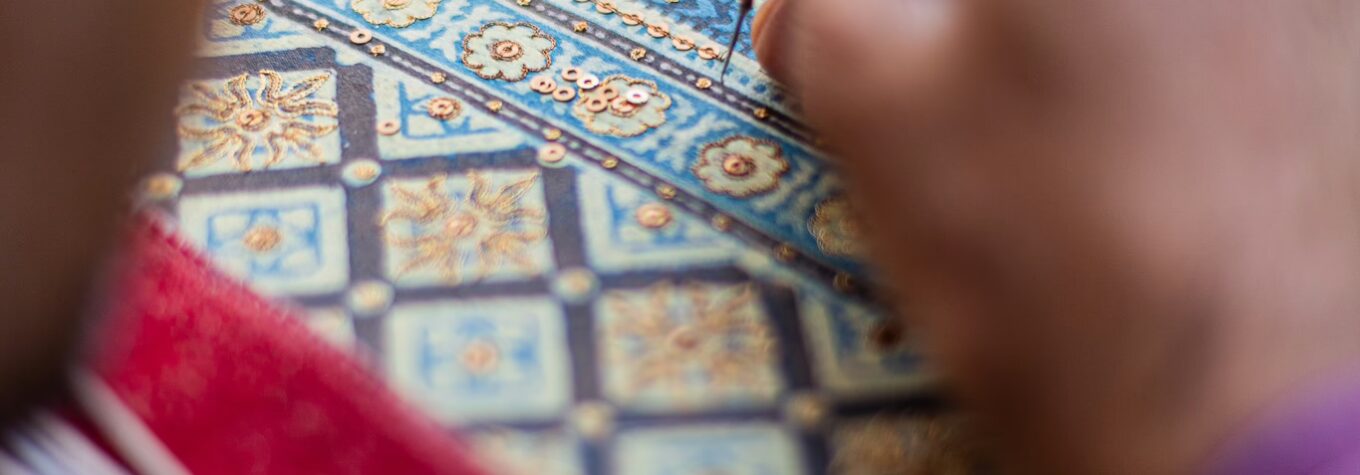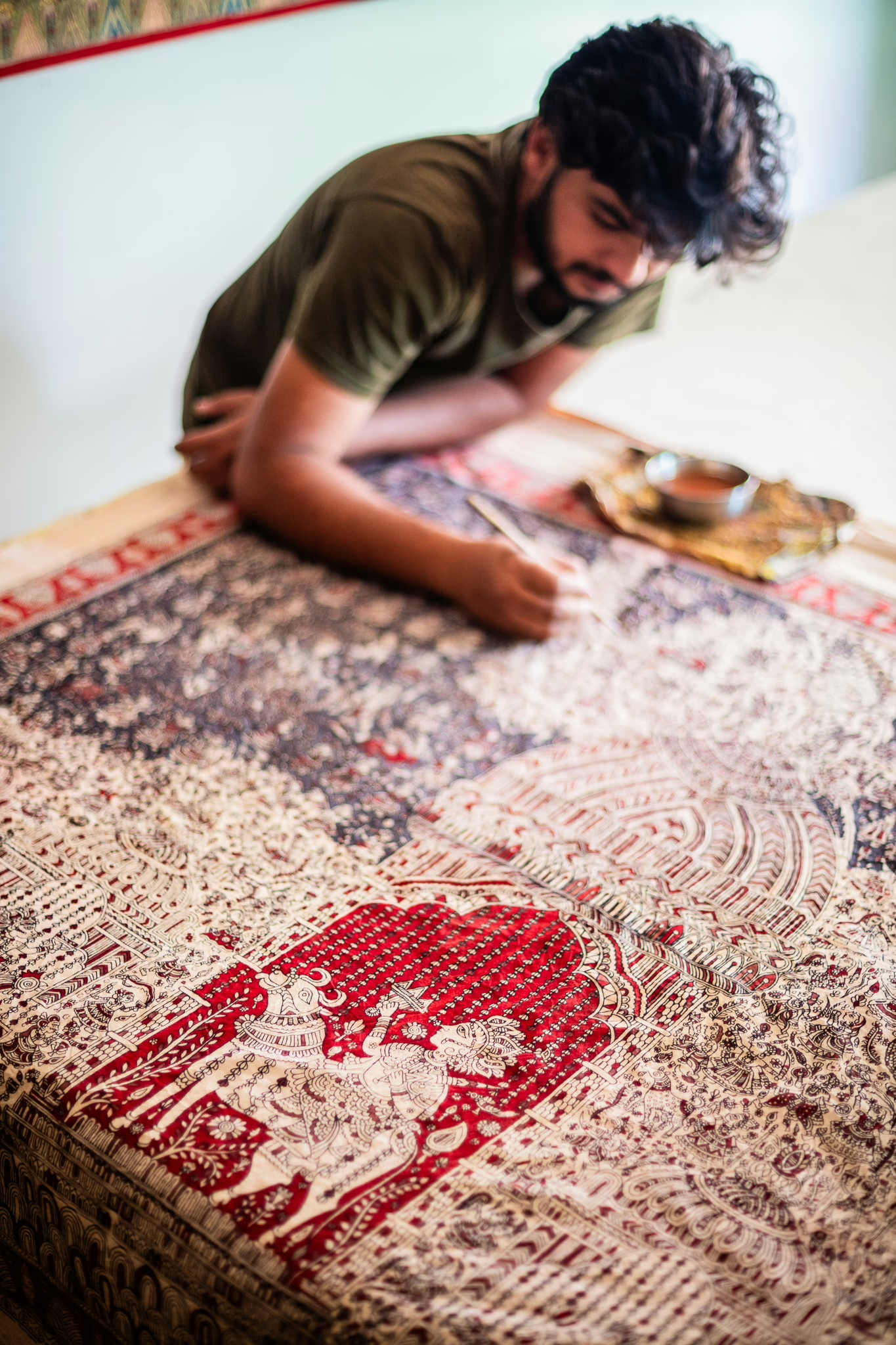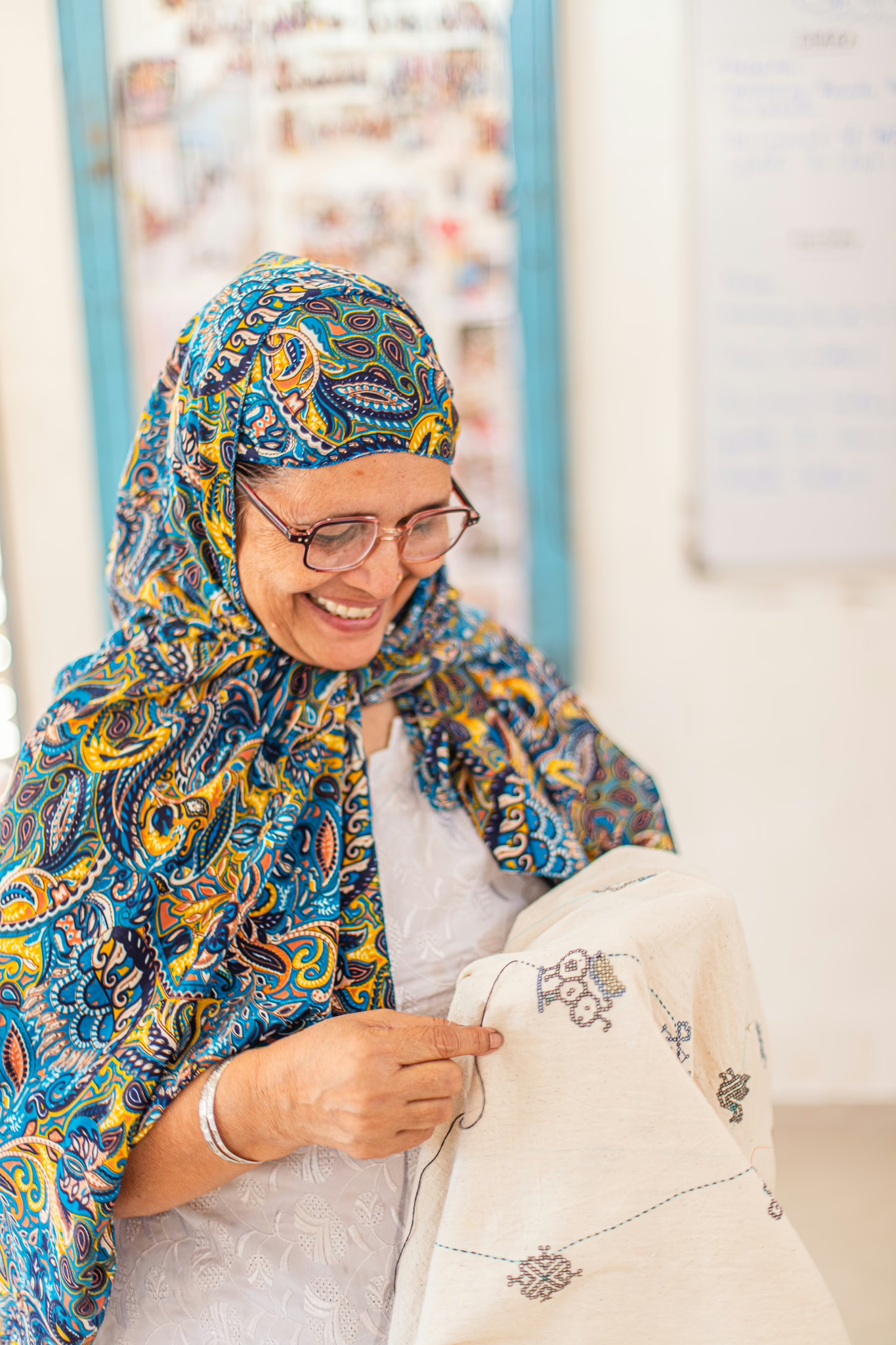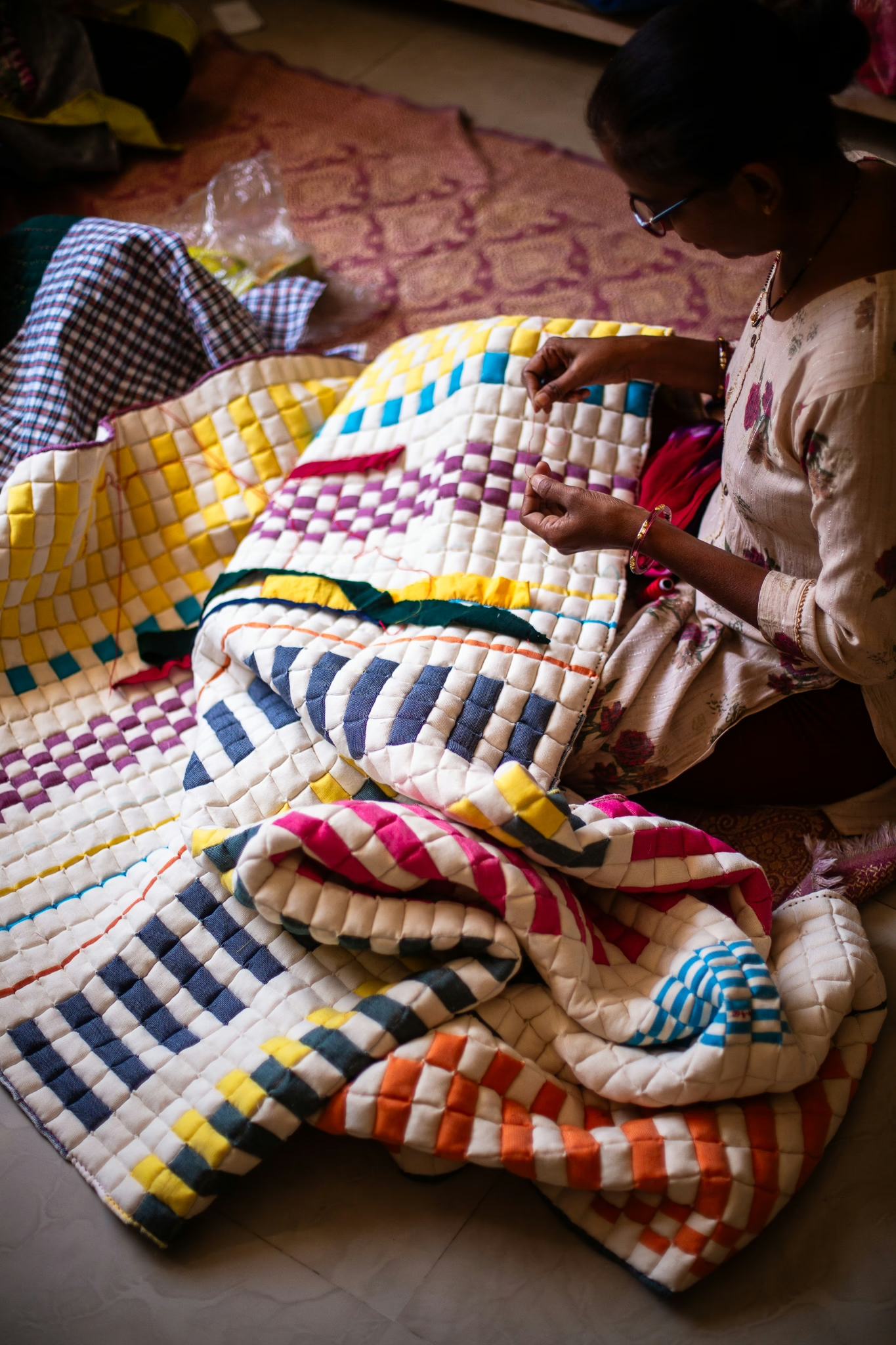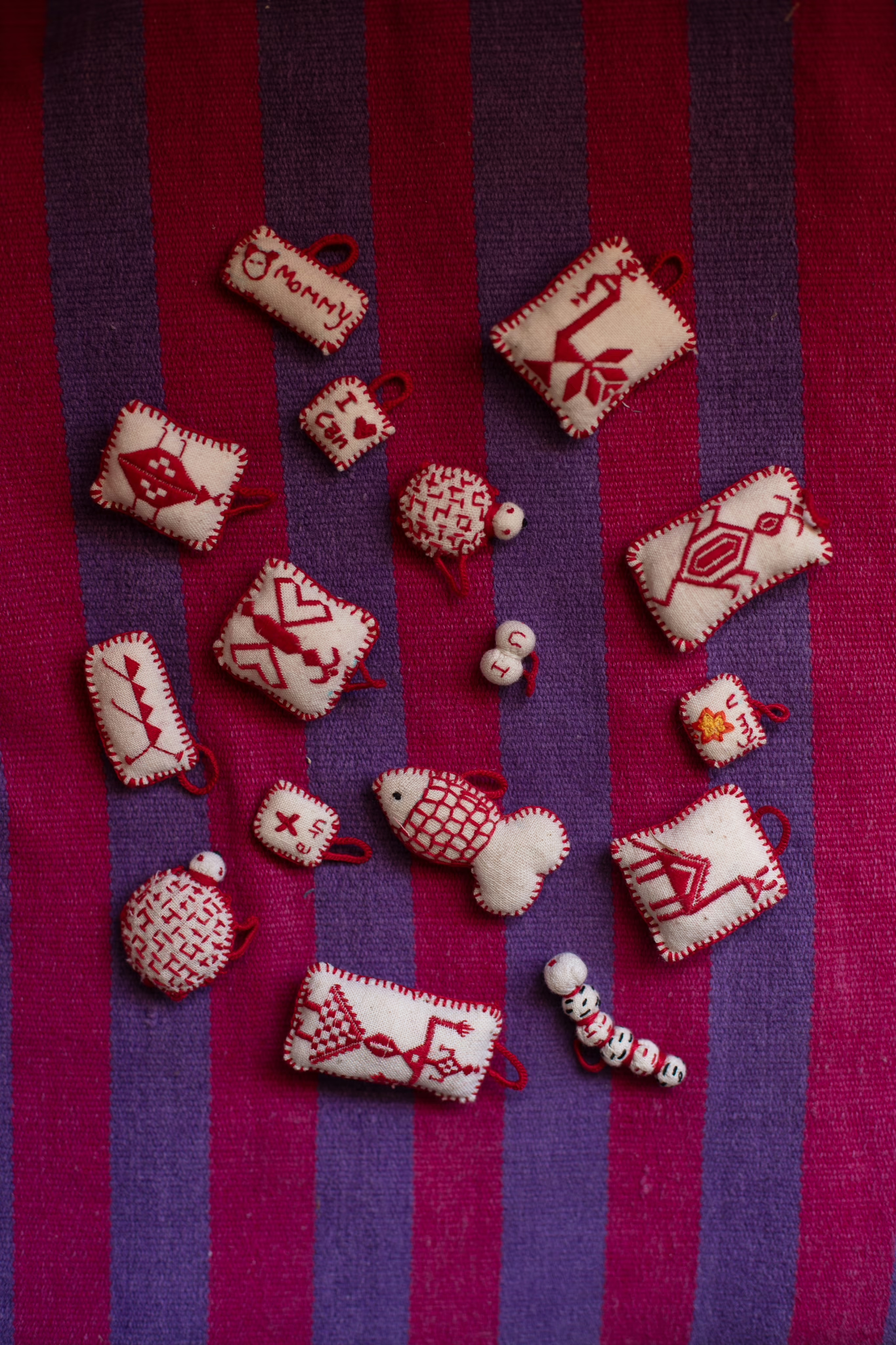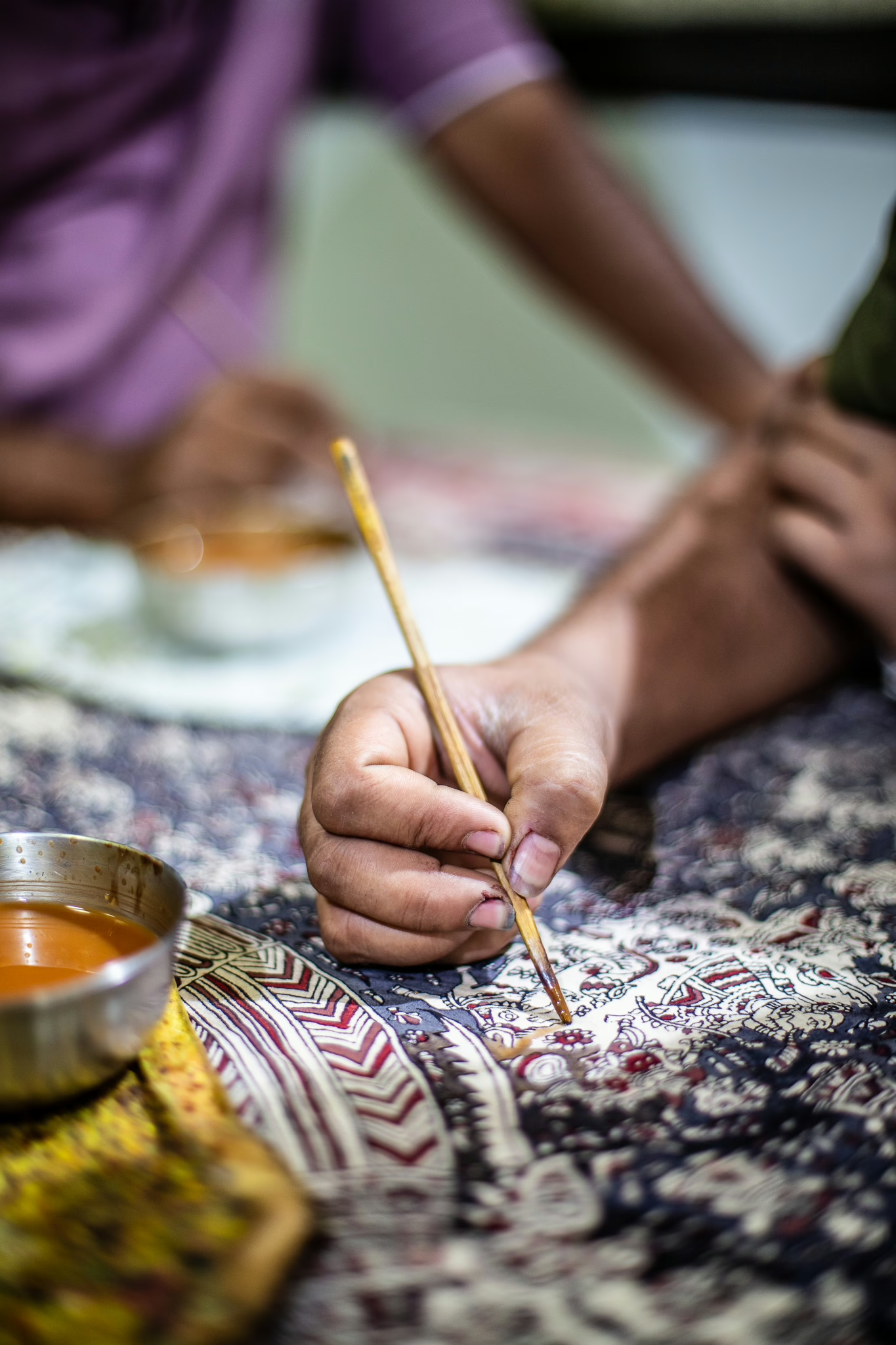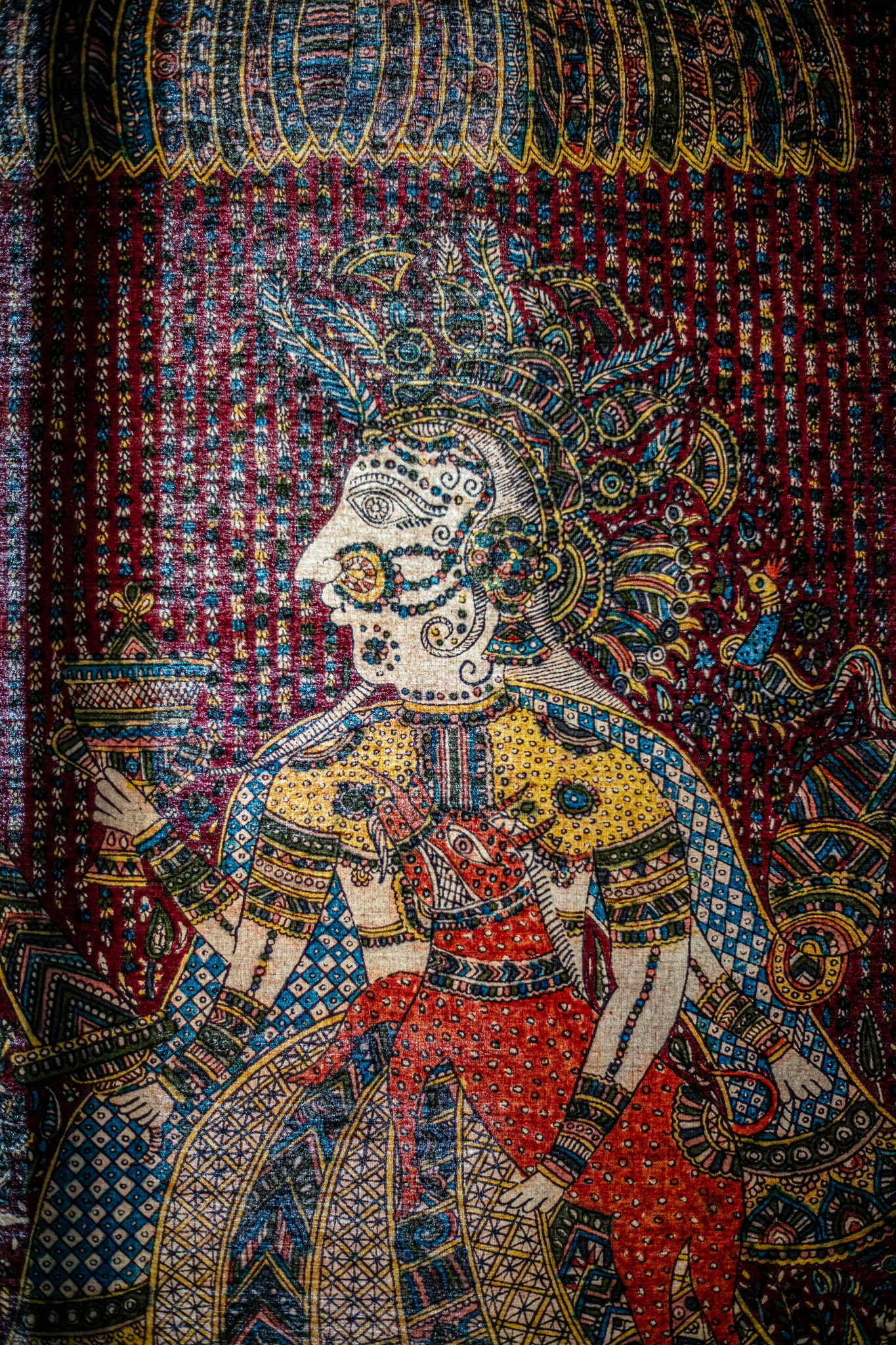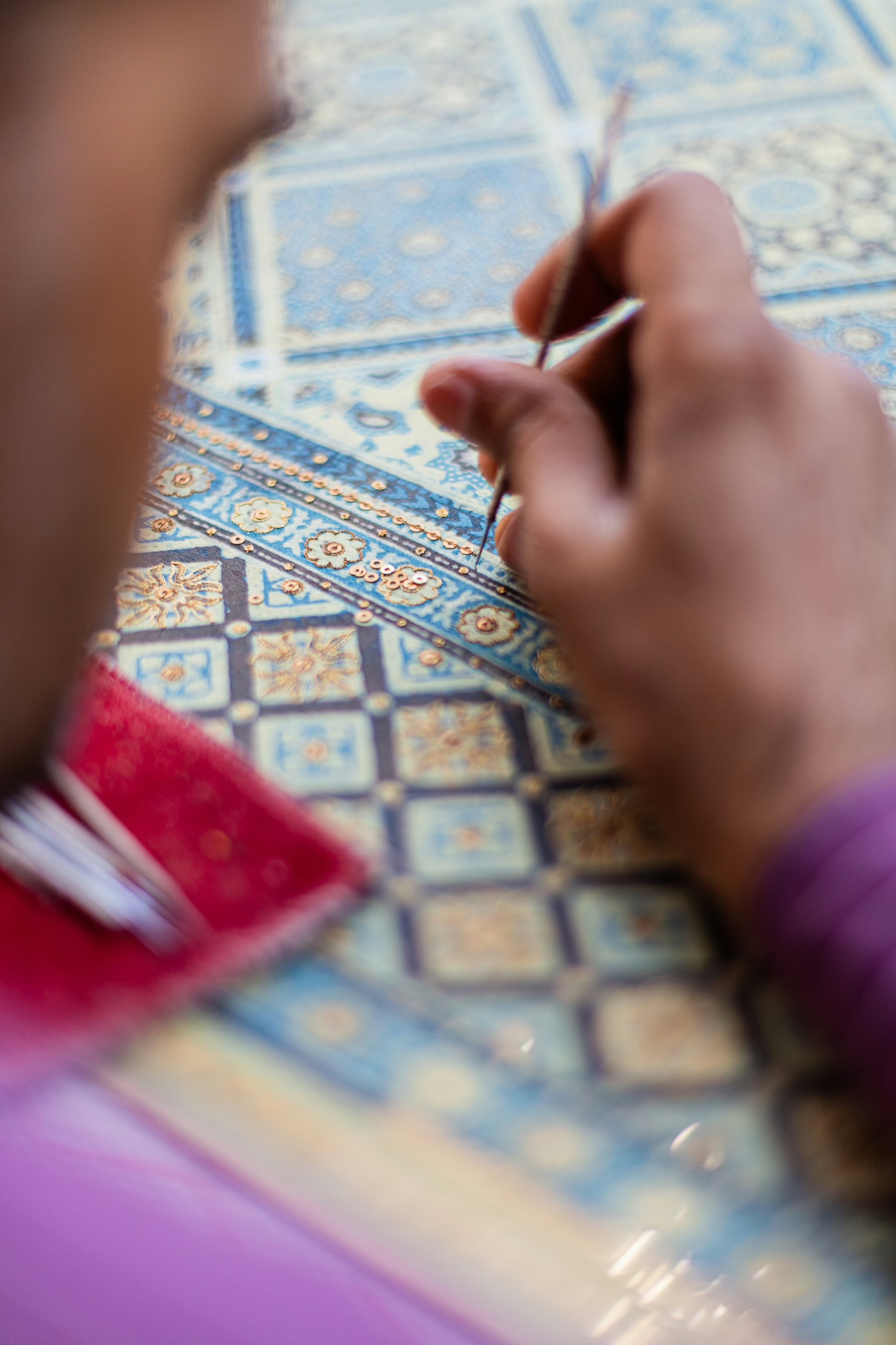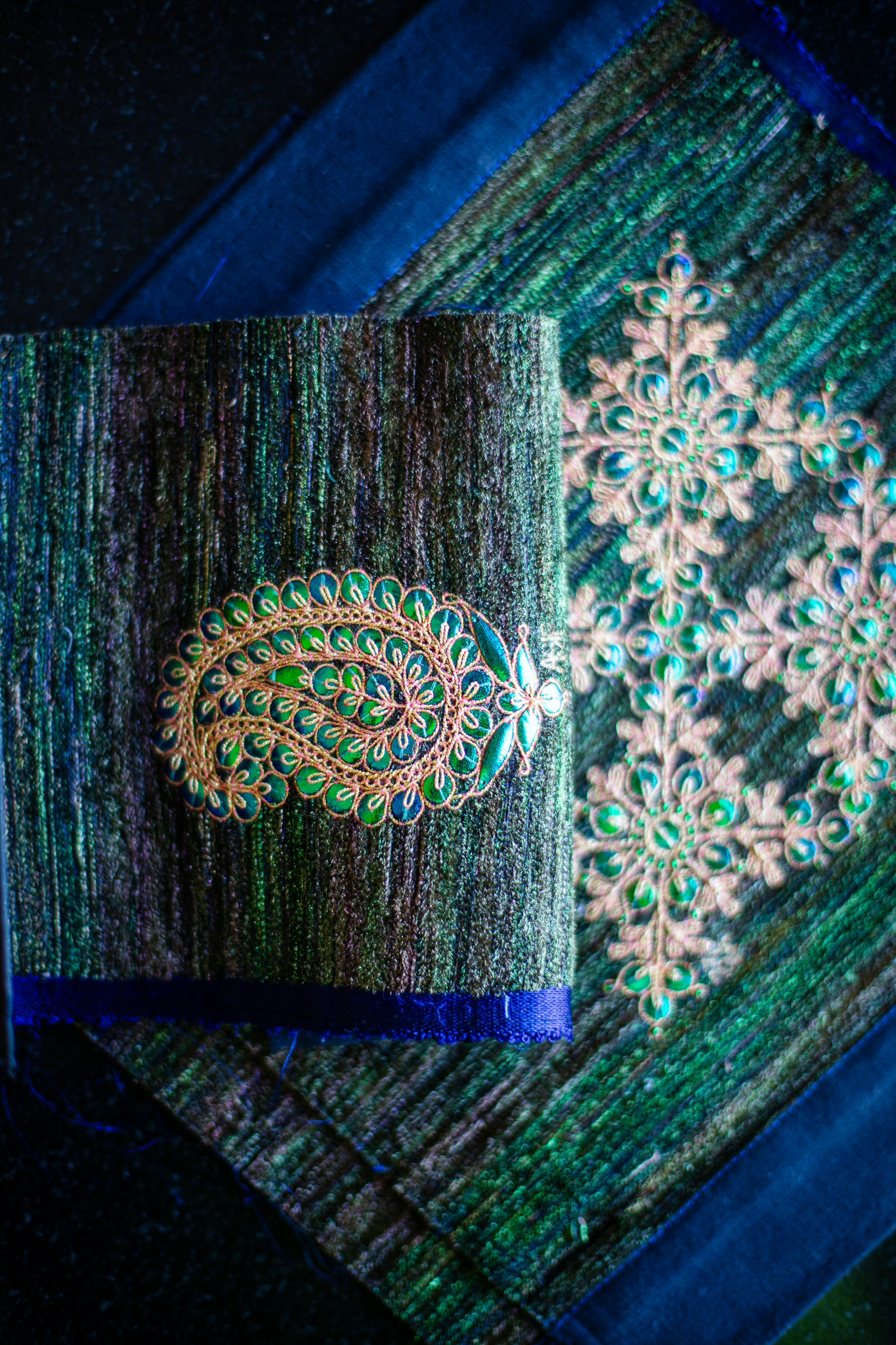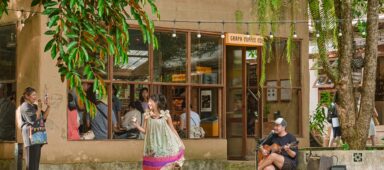From hand-stitched cotton and sacred ritual cloths to Mughal-era embroidery, a journey through Ahmedabad’s textile studios reveals how artisans are preserving India’s craft heritage – one stitch, brushstroke and thread of gold at a time
My first time in Ahmedabad was a whirlwind of everything grand and beautiful. In the capital of the western Indian state of Gujarat and India’s first Unesco World Heritage City, I wandered through jewel-box mansions, stared awestruck at façades filigreed with delicate carvings and descended ornate stepwells carved like inverted temples.
Centuries of trade and migration had left its imprint on this city; Persian, Central Asian and Islamic influences are visible in the exquisite details. I saw these imprints in the patterns, geometry and symbolism etched in fabric at the Calico Museum of Textiles: the lustrous sheen of Mashru, a handwoven fabric of silk and cotton; the fluid strokes of the Gujarati art of cloth printing known as Rogan painting; the bold motifs of Rabari embroidery. Artistic expression, regardless of medium, shared a common language. And it was dazzling.
When Shilpa Sharma, founder of Breakaway – a Delhi-based special interest tour company that connects travellers with India’s rich craft and textile culture – described Ahmedabad as “a perfect teaser to the state’s craft legacy”, I knew it was time to return. A whole day of diving deep to uncover the nuances of Gujarat’s craft heritage was impossible to resist.
The trail begins in the quiet residential neighbourhood of Paidi, not far from the Sabarmati Riverfront, where RaasLeela Textile, a studio that specialises in slow fashion, is located. Here, clothes made of raw, unprocessed cotton are completely stitched by hand. According to designer and founder Hetal Shrivastav, the brand is deeply committed to using sustainable resources, and investing in craft revival and inclusive growth for artisans connected to the land.
A hum of focused activity fills the space. Here, women artisans are deeply immersed in their work, stitching seams, buttonholes and hems. They select fabric scraps, arrange them into patterns and secure them with tiny, precise stitches. There are no machines, only the quiet rhythm of skilled hands preserving an ancient craft known as katab.
Katab is an age-old appliqué technique practised for generations in Gujarat, where fabric scraps are layered and stitched into quilts and clothing. For centuries, it has been an artful way to mend clothes, extend the life of garments and ensure zero waste. It celebrates imperfections – I watch as the studio artisans follow different motifs and stitching styles, each with a unique rhythm of needlework. When I pick up a needle to try my hand at stitching, I quickly realise how much patience and precision this craft demands. Katab is no regular mending routine; it’s storytelling.
RaasLeela’s production model produces only 50 to 80 pieces a month (a mix of garments and home décor) ensuring that every stitch carries the weight of time-honoured skills.
Many of these handcrafted pieces find their way to global showcases such as XTANT in Mallorca, Spain and the International Folk Art Market (IFAM) in Santa Fe, New Mexico, or the shelves of Suno & Morrison in Japan, Cottage Industry in Australia and Loom & Stars in the US. As I trace my fingers over an ecru appliqué fabric, it strikes me that the real story isn’t about where these pieces find a home but in the hands that shape them. These artisans breathe new life into an age-old craft that refuses to be lost.
The next stop of the tour is a visit with Sanjay Manubhai Chitara, a National Award-winning artisan and one of the last surviving masters of a 300-year-old sacred textile tradition, Mata ni Pachedi or ritual cloth paintings. Often called the Kalamkari of Gujarat, Mata ni Pachedi (which means “behind the Mother Goddess” in Gujarati) originated as temple hangings for communities that have historically been denied entry into mainstream temples. These intricate cloth panels serve as portable shrines, allowing devotees to venerate the goddess in makeshift sacred spaces.
Every artwork depicts mythological scenes from Hindu epics, goddess manifestation and celestial beings engaged in cosmic battles. Today, the art form holds deep ritualistic significance while finding a place in museums, homes and luxury hotels as a revered heritage art form.
Amid rolls of cloth and bowls of natural pigments, Chitara effortlessly traces intricate forms of the Mother Goddess onto cotton fabric using bamboo brushes. The alchemy of colour-making is intriguing – black comes from fermented jaggery and rusted iron, yellow from turmeric, pink from madder root, blue from indigo and brown from catechu. Each stroke follows a meticulous sequence, first outlining the figures in black before gradually filling them with natural hues, each colour symbolising divine elements: red for power, black for protection and white for purity.
The master artisan explains how Mata ni Pachedi remains within a handful of close-knit Chitara families, passed down through generations. He learned the craft from his father, and now his children continue the tradition. The process is painstaking: a 2-feet by 3-feet piece takes about a month to create, and supersized pieces sold for up to three lakh rupees (USD$3,500), demand even more time and precision.
Yet, hurdles loom. The newly built Sabarmati Riverfront, once essential for dyeing, is now off-limits, challenging traditional fabric washing. Still, Mata ni Pachedi remains a living legacy, resilient and deeply intertwined with faith.

At Asif Shaikh’s Private Embroidery studio, the final stop of the day, I am transported to a bygone world of opulence. Visions of the Silk Route, along which luxury textiles criss-crossed continents, flash through my mind. The Ahmedabad-based textile and fashion specialist has spent five decades researching endangered crafts and elevating embroidery, particularly miniature work, to global recognition with an almost contagious passion.
I learn about his prestigious commissions for institutions – such as the Aga Khan Museum and Humayun’s Tomb in Delhi, and the V&A Museum in London – and about how his work has taken him to international forums, from SOAS in London and the World Eco-Fiber and Textile Forum in Malaysia to IFAM.
Shaikh helps me decode the artistry of Zardozi, or intricate gold and silver threadwork – originally from Persia, modern-day Iran – and Aari, a delicate chain-stitch technique. Both crafts flourished in India under Mughal rule from the early 16th to the mid-18th century, nurtured in royal karkhanas (workshops). Once reserved for imperial garments and ceremonial décor, these exquisite techniques have found new patrons in heirloom pieces and rarefied couture.
Inside the workroom, I sift through hundreds of embroidered samples, bedecked with peacock feathers, beetle wings, actual gold-plated silver thread and precious stones such as rubies, emeralds and pearls. Bent over their frames, artisans who had been personally trained by Shaikh – having spent years perfecting classical motifs – bring elaborate designs to life with nimble fingers and practised precision.
But Shaikh’s influence extends far beyond his bespoke finery. As one of the three custodians of the Craft Design Society Art Foundation, a group that works to preserve, nurture and promote India’s rich textile traditions, he’s at the forefront of safeguarding this inheritance, fostering collaborations between artisans and designers to create fashion that bridges past and present.
“If we lose craft, we lose culture,” he insists. His words linger, gleaming like gold thread in the light. Ahmedabad’s ateliers will continue weaving the warp and weft of memories with modernity as long as we cherish their worth. Heritage isn’t just a relic of the past; it’s a story we keep telling.

While you’re here…
The Calico Museum of Textiles, housed in a 17th-century mansion in Ahmedabad, is one of India’s most renowned textile museums. It features an extensive collection of rare and historic textiles, including Kashmiri shawls, Patola saris, Mughal-era tapestries and religious cloth paintings.
The museum showcases various textile-making techniques, like block printing, embroidery and weaving, and displays of natural dyeing processes and traditional craftsmanship.
Guided tours provide in-depth insights into India’s textile heritage and entry is limited to small, pre-booked groups for a focused, immersive experience. Morning tours run from 10.30am to 12.30pm, while afternoon tours are from 2.30pm to 4.30pm. The museum is open Tuesday to Sunday.
Where to stay in Ahmedabad

House of MG. Heritage boutique stay where vintage meets comfort. Think handcrafted interiors, grand courtyards and old-world charm wrapped in modern hospitality.

ITC Narmada. A luxe escape that blends Gujarat’s cultural essence with contemporary elegance. Expect refined design, sustainable luxury and impeccable service.

Taj Skyline. Sleek high-rise retreat with chic interiors, panoramic city views and top-tier amenities. A seamless blend of luxury and timeless heritage.
